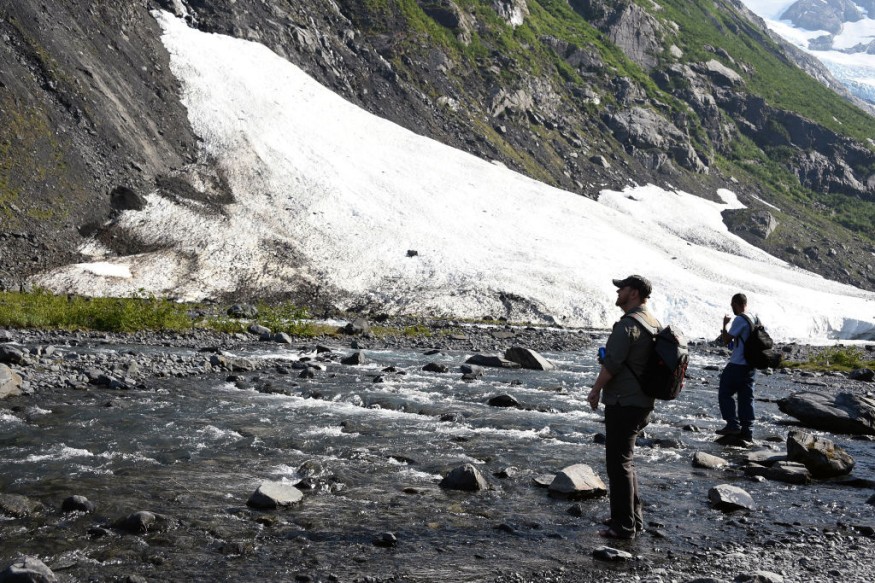Officials warned locals Friday that the largest reported wildfire raging through the tundra in southwest Alaska was within miles of two Alaska Native settlements, urging them to prepare for possible evacuation.

This happened just one day after scores of senior citizens and individuals with health concerns voluntarily left due to smoke from a neighboring fire.
Evacuation Ready
Officials in St. Mary's and Pitkas Point declared the villages "ready" on Friday, advising people to pack essential items they'd want to bring with them if they had to evacuate. By text, Beth Ipsen of the Bureau of Land Management's Alaska Fire Service. If the "go" command is given, "set," or getting a go-bag ready, would be followed by "leave."
On the largely treeless tundra, the fire is consuming dry grass, alder, and willow bushes as gusts of up to 30 mph (48.28 kph) push it in the general direction of St. Mary's and Pitkas Point, Yup'ik subsistence communities with a combined population of about 700 people and located approximately 10 miles (16 kilometers) apart.
About 65 firemen are battling the incident, with another 40 anticipated later Friday, according to Ipsen.
Fire's Movement
Since Thursday, the fire had not spread much and was still estimated to cover 78 square miles (202 square kilometers). Officials said in a late Friday report that northerly winds drove the fire within 5 miles (8 kilometers) near St. Mary's.
Ipsen stated that she was unaware of any missing buildings.
Air tankers dropped retardant between the line and St. Mary's as another buffer while crews removed brush and other fuel from a swath of land in the path of the flames. Other planes poured water on the fire until another fire broke out north of Mountain Village, a small hamlet.
According to Rick Thoman, a climate scientist with the University of Alaska Fairbanks' International Arctic Research Center, climate change played a part in the unprecedented fire.
He claims this is the greatest documented wildfire in the lower Yukon River basin, according to Alaska Fire Service data dating back to the 1940s. Much larger fires have been reported barely 50 or 60 miles (97 kilometers) north of St. Mary's, but they were in boreal woods.
Losing Snowpack
The Yukon-Kuskokwim Delta, where the tundra fire is raging, lost its snowpack early this year, taking longer for grass and other plants to dry out. It was the ideal storm for this fire, caused by lightning on May 31, and coincided with the region's hottest time.
"Climate change did not trigger the rainstorm that caused the fire," he explained, "but it did enhance the possibility that the ambient circumstances would be responsive."
The closest long-term weather station is at Bethel, Alaska's southwest hub settlement, about 100 miles (160.93 kilometers) southeast of St. Mary's.
Bethel saw its highest temperatures on record this year during the latter week of May and the first week of June, with temperatures 9 degrees F (12.78 degrees C) above the typical 48 degrees F (8.89 degrees C), according to Thoman.
Urgency of the Situation
According to Jeremy Zidek, a spokeswoman for the Alaska Division of Homeland Security and Emergency Management, some 80 village elders and those with health problems were transferred to the Alaska National Guard Armory in Bethel on Thursday.
The passengers were flown to Bethel by two businesses that provide commuter aviation service in roadless western Alaska.
Yute Commuter Services, for example, conducted 12 trips out of St. Mary's on its six-seat aircraft, according to Andrew Flagg, the company's station manager in Bethel.
He claimed they were instructed to provide drinking water to the town on Friday so it could be distributed to the firefighters.
St. Mary's and Pitkas Point are about 450 miles (724 kilometers) west of Anchorage, near the junction of the Andreafsky and Yukon rivers.
Related Article : New Mexico Calf Canyon Fire Ignited Zombie Fire
For more news about the environment , don't forget to follow Nature World News!
© 2025 NatureWorldNews.com All rights reserved. Do not reproduce without permission.





